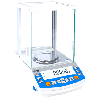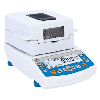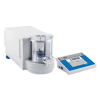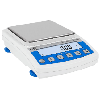We use cookies to make your experience better. To comply with the new e-Privacy directive, we need to ask for your consent to set the cookies. Learn more.
Balances & Scales
Precision laboratory balances, also called top loading balances, are a form of scale designed to offer highly accurate results, within the sub-milligram range. Used for the measurement of small samples, precision balances provide an accurate, quick, and simple way of determining the weight of items such as particulate matter. Electronic precision balances offer a wide range of weighing capacities, with maximum capacities up to 64 kg. They allow readability in the range of 1 mg (0.001 g) to 1 g, or 0-3 decimal places. High precision laboratory balances can extend this accuracy to 4 decimal places, on the display of the precision balance, 0.0001g (0.1mg) increments are used.
Precision balances produce steady readings in a wider range of environmental conditions than analytical balances which must always be used under strict conditions to ensure accurate readings. Being less sensitive to temperature fluctuations and air currents, precision balances can serve as the more convenient method of measurement. While a draft shield is not always necessary for the accurate use of a precision balance, when working in a fume hood or under normal conditions with a high-resolution precision balance of 1 mg readability, one should be employed to maintain performance.
Precision laboratory balances, also called top loading balances, are a form of scale designed to offer highly accurate results, within the sub-milligram range. Used for the measurement of small samples, precision balances provide an accurate, quick, and simple way of determining the weight of items such as particulate matter. Electronic precision balances offer a wide range of weighing capacities, with maximum capacities up to 64 kg. They allow readability in the range of 1 mg (0.001 g) to 1 g, or 0-3 decimal places. High precision laboratory balances can extend this accuracy to 4 decimal places, on the display of the precision balance, 0.0001g (0.1mg) increments are used.
Precision balances produce steady readings in a wider range of environmental conditions than analytical balances which must always be used under strict conditions to ensure accurate readings. Being less sensitive to temperature fluctuations and air currents, precision balances can serve as the more convenient method of measurement. While a draft shield is not always necessary for the accurate use of a precision balance, when working in a fume hood or under normal conditions with a high-resolution precision balance of 1 mg readability, one should be employed to maintain performance.
Analytical Balances
An Analytical Balance (often called a "lab balance".) is a class of balance designed to measure small mass in the sub-milligram range. The measuring pan of an analytical balance (0.1 mg or better) is inside a transparent enclosure with doors so that dust does not collect and so any air currents in the room do not affect the balance's operation. This enclosure is often called a draft shield. The use of a mechanically vented balance safety enclosure, which has uniquely designed acrylic airfoils, allows a smooth turbulence-free airflow that prevents balance fluctuation and the measure of mass down to 1 μg without fluctuations or loss of product. Also, the sample must be at room temperature to prevent natural convection from forming air currents inside the enclosure from causing an error in reading. Single pan mechanical substitution balance maintains consistent response throughout the useful capacity is achieved by maintaining a constant load on the balance beam, thus the fulcrum, by subtracting mass on the same side of the beam to which the sample is added.

Moisture Analyzers
Moisture Analyzer is often also called a moisture balance or moisture meter. It consists of a weighing unit and a heating unit (infrared technology) and is used to determine the moisture content of a sample with the loss on drying principle. Moisture analyzer measures the amount of moisture in a substance, this is particularly helpful in food processing labs as the amount of moisture can be an indicator of freshness and quality for some foods.

Micro Balances
A Micro balance is an instrument capable of making precise measurements of the weight of objects of relatively small mass: of the order of a million parts of a gram. In comparison, a standard analytical balance is 100 times less sensitive; i.e. it is limited in precision to 0.1 milligrams. Microbalances are generally used in a laboratory as standalone instruments but are also incorporated into other instruments, such as thermogravimetry, sorption/desorption systems, and surface property instruments. It is the precision of the microbalance that distinguishes it from other weighing devices.
Electronic Analytical Scales measure the force needed to counter the mass being measured rather than using actual masses. As such they must have calibration adjustments made to compensate for gravitational differences. They use an electromagnet to generate a force to counter the sample being measured and outputs the result by measuring the force needed to achieve balance. Such measurement device is called electromagnetic force restoration sensor.
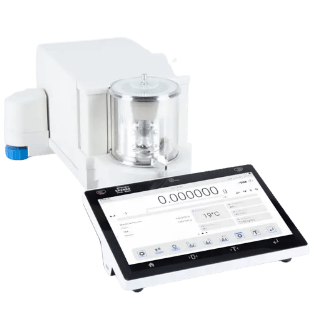
Precision Balances
Precision laboratory balances, also called top loading balances, are a form of scale designed to offer highly accurate results, within the sub-milligram range. Used for the measurement of small samples, precision balances provide an accurate, quick, and simple way of determining the weight of items such as particulate matter.



